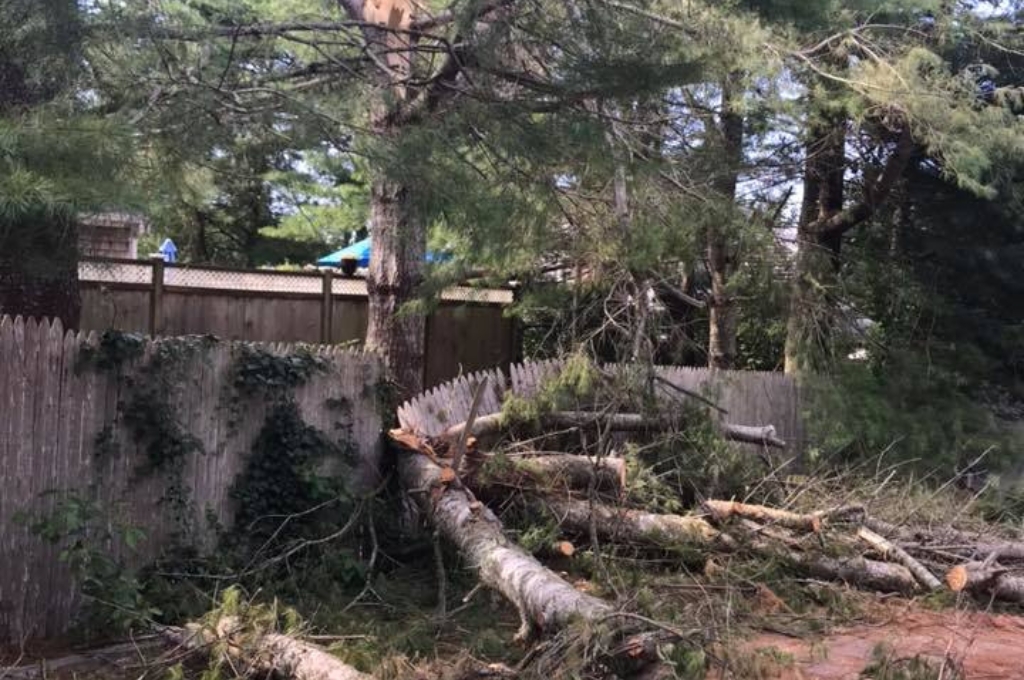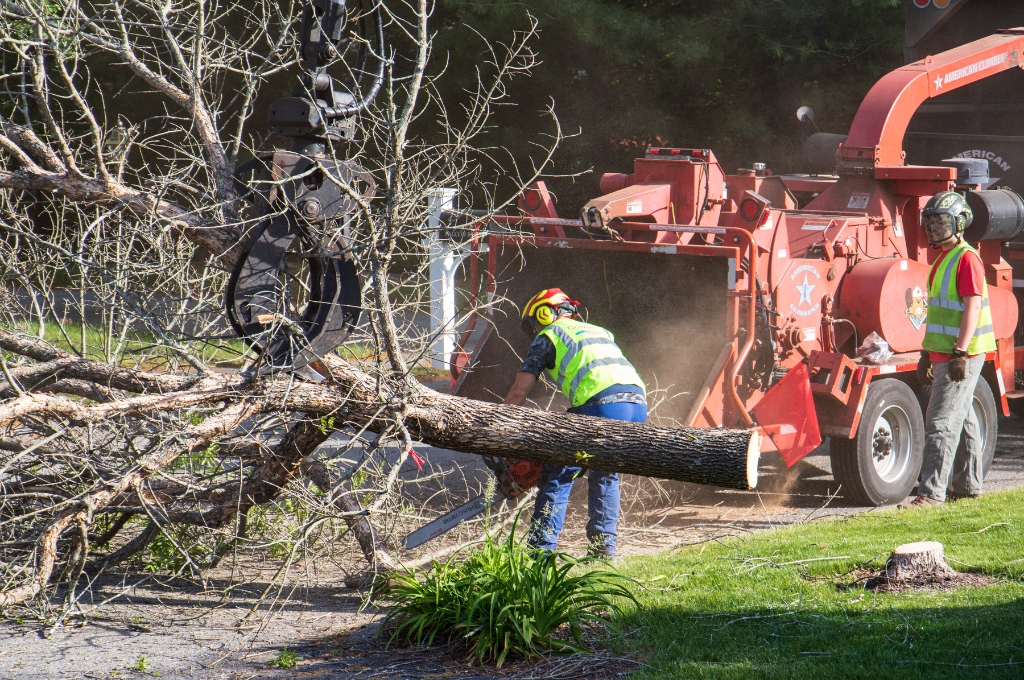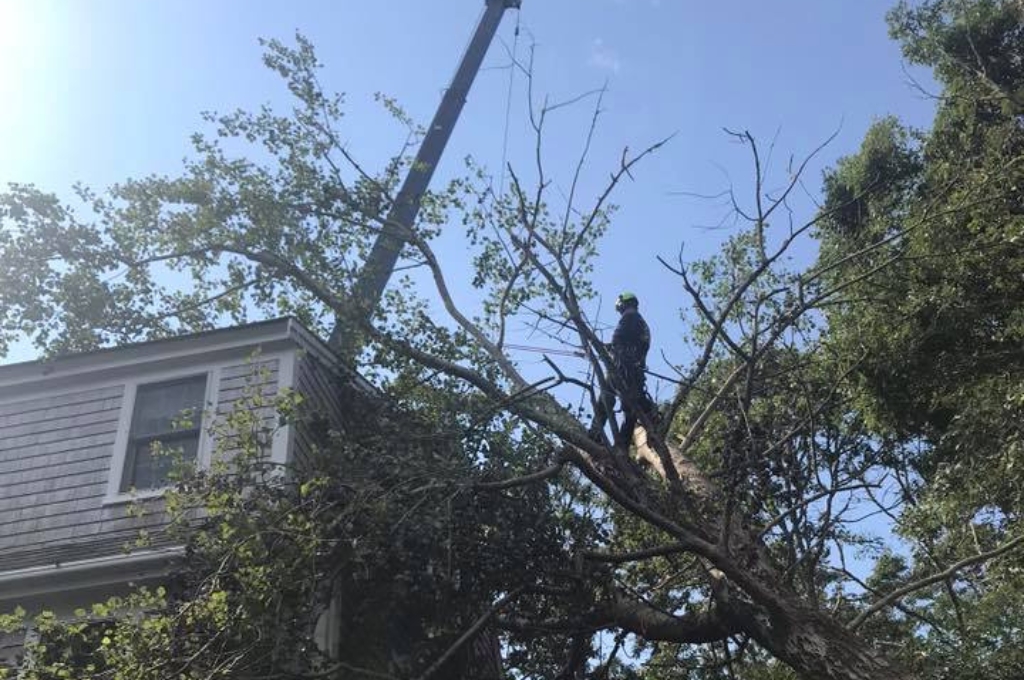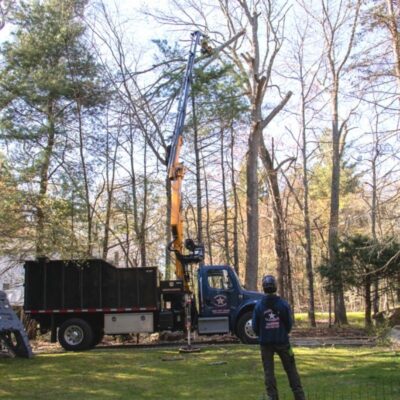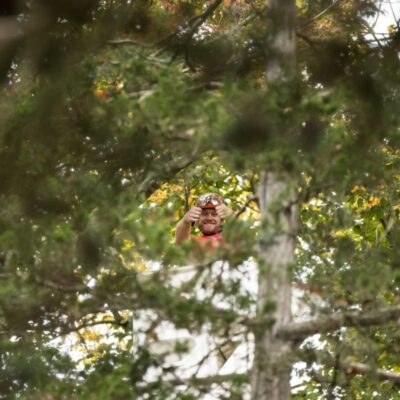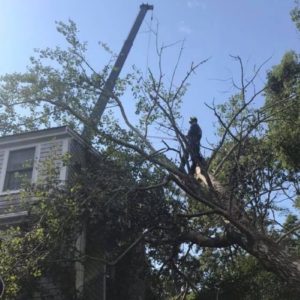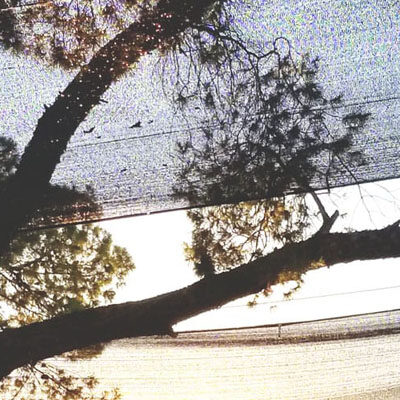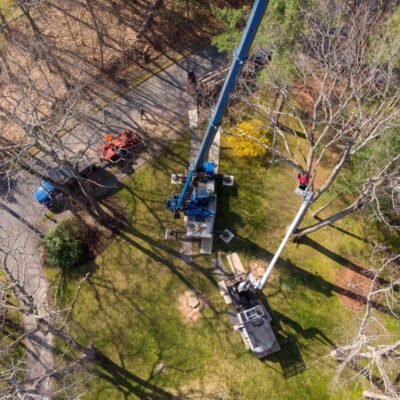Few things deliver such fear as hearing a tree fall during a storm, and the situation gets even worse if the tree falls in your yard. This is especially prominent in an urban setting like Marlborough, where properties are close together. Determining responsibility for removing the tree may not be the first thought in your mind, but it’s a big question that you should know the answer to.
In this article, we will examine the laws around fallen tree removal in Massachusetts and who takes responsibility. We’ll also look at what to do in cases where a public tree falls on your property.
Key Takeaways
- The precedent for fallen tree liability comes from the Massachusetts Supreme Judicial Court case Ponte v. Silva in 1983.
- Generally speaking, if a neighbor’s tree falls in your yard from a storm or other “act of God,” you will be responsible for removing it; this also applies to town-owned trees.
- A neighbor may be held liable for a fallen tree if there is proof that the tree was a danger and the owner should have been aware of it.
- Renters are not responsible for removing a tree that falls onto or from their rental property.
- After a tree falls on your property, stay safe, document the damage, contact your insurance company, and hire a professional to remove the tree.
Frequently Asked Questions About Fallen Tree Removal Responsibility
Understanding what to do after a tree falls in your yard and who is responsible can be difficult, and we’ve gotten many questions over the years on the topic. We’ve compiled some frequently asked questions about fallen tree removal responsibility in Massachusetts.
DID YOU KNOW? Some trees are more prone to failure in a storm than others. For more information and to see if you have any of these trees, check out our previous article on the topic.
Who’s Responsible for Removing Privately Owned Trees?
Tree ownership in Massachusetts is relatively straightforward; if the tree is on your property, it’s yours. However, that doesn’t mean you’re responsible for removal or any damage that occurs if a tree falls on your neighbor’s property.
The Massachusetts Supreme Judicial Court made this the law in the case of Ponte v. Dasilva in 1983. The ruling states that homeowners can’t be held responsible for fallen trees or damage when the tree in question is healthy.
So, simply put, if a neighbor’s otherwise healthy tree falls on your property through an “act of God,” you and your insurance company are responsible for removing the tree and any resulting damage to your property. We’ve seen our fair share of damaging weather in recent years, including massive storms in 2023 that caused many trees to fall in Framingham and surrounding areas.
However, if the tree was determined to be dead, sick, decaying, or diseased, the tree’s owner could be liable. In these situations, it would still be up to the insurance companies to find fault and assign financial responsibility.
PRO TIP: If you don’t want to risk the liability of having an unhealthy tree in your yard, consider removing it. In towns with close residential areas like Milford, weak trees can easily fall in a neighbor’s yard.
Are Renters Responsible for Removing a Fallen Tree?
The same 1983 Ponte v. Silva ruling applies to rental properties. In these cases, tree removal is still the responsibility of whoever owns the affected property. Whether the tree fell from or onto a rental property, the renters aren’t liable. Each respective property’s owner or landlord is responsible for removing the tree.
What should I do after a tree falls in my yard?
We recommend the following steps after a tree falls in your yard:
- Keep Everyone Safe: Fallen trees are dangerous, as they may have broken power lines or weakened a structure to the point where it could break. Always use caution around a fallen tree and watch for any signs of instability.
- Photograph the Scene: Accurate documentation and photographs of the scene will help with insurance claims and settle disputes with neighbors.
- Contact Your Insurance Company: If the tree did damage to your property or house, contact your homeowner’s insurance provider. If the tree damaged your car, contact your auto insurance provider. Give them all the details of the incident and allow them to guide you through the next steps.
- Have a Tree Service Team Remove the Tree: Tree removal is never a DIY project, and removing a storm-damaged tree can be extra tricky. A professional tree removal team will safely remove the tree and minimize further damage to your property.
Who’s Responsible for Removing Publicly Owned Trees?
In the case of government-owned trees, whether municipal, county, state, or federal, the same laws apply as in the case of privately owned-trees.
Regardless of tree ownership, the party affected by the fallen tree is responsible for removing it and recovering any potential damages through their insurance company. Again, if the tree was known or found to be diseased, damaged, or decaying, it’s a matter for the insurance companies to settle.
Do You Have a Tree You Need Removed?
Trees are sturdy but can topple during a fierce summer storm or a brutal Nor’easter. You are typically responsible for a tree that falls in your yard unless the tree was obviously weak and a hazard.
Whether your tree has already fallen or you just want to be proactive, American Climbers can assess the health of your trees. If removal is recommended, we’ll take care of it efficiently and safely with our state-of-the-art equipment. We even offer 24-hour emergency service when the unexpected happens.
Whether you’re in Wellesley, Maynard, Grafton, Bellingham, or somewhere in between, we can help. Call us today at 508-497-8628 or request a quote online for help with your tree removal.
Blog Topics
Recent Posts
What's Happening? Stay Informed!
Stay on top of local events, pest and disease updates, tree and landscape tips, and more. Delivered straight to your inbox each month.

